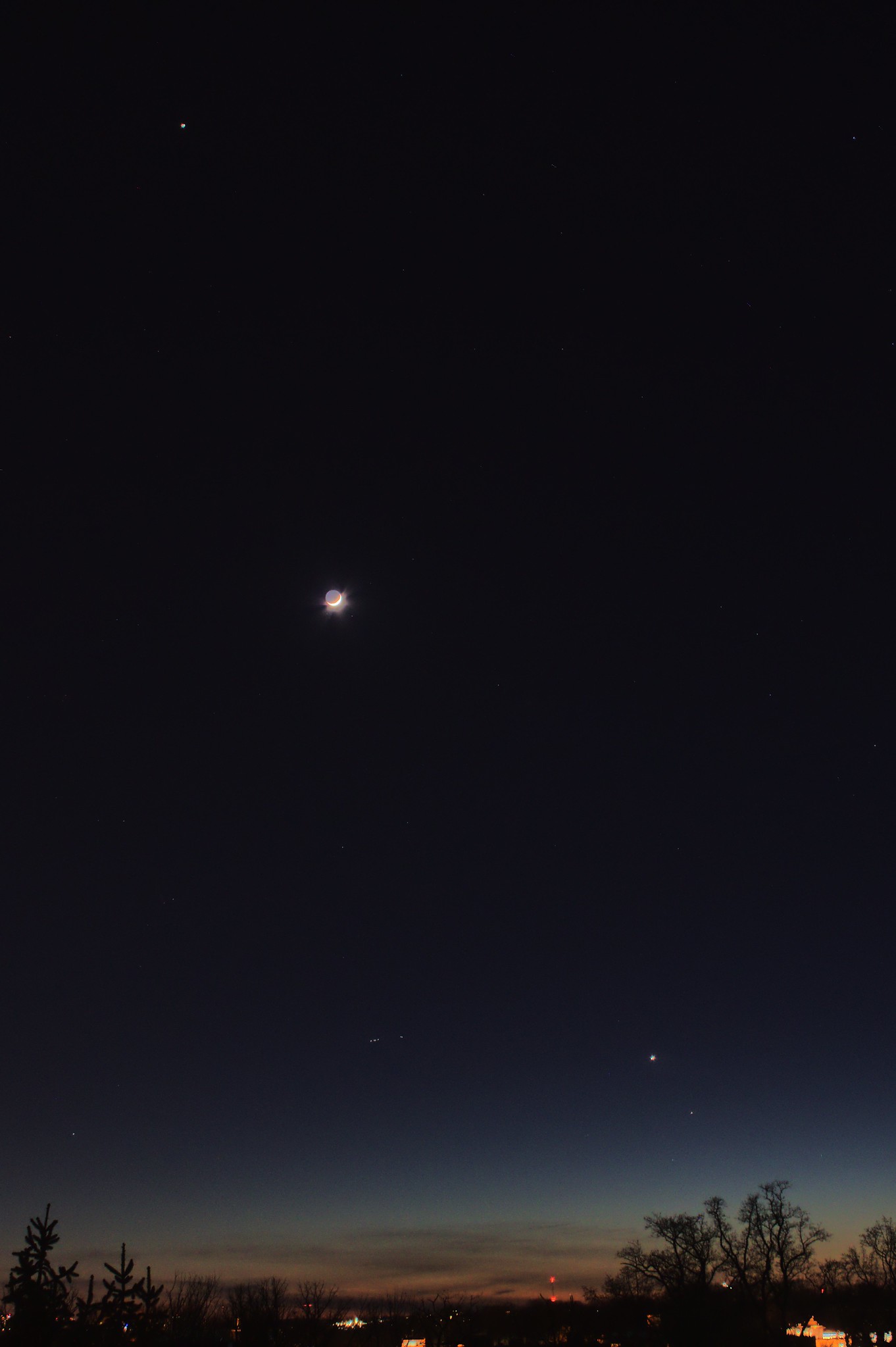
Jupiter, the Moon, Venus, & Saturn, 2023 January 24
Imaged from the U.S. Naval Observatory with a Canon EOS Rebel SL2 DSLR
The Moon dominates the night sky this week, beaming down from a perch high among the stars of the Great Winter Circle as the week opens before starting a southerly descent through the rising stars of spring. Full Moon occurs on February 5th at 1:29 pm Eastern Standard Time. February’s Full Moon is popularly known as the Snow Moon due to the generally abundant snowfall that we usually see at this time of the year. It is also known as the Hunger Moon, Ice Moon, or Bear Moon. Look for Luna close to the Twin Stars of Gemini, Castor and Pollux, on the evening of February 3rd. She ends the week among the stars of Leo, the Lion.
February 2nd is a special day in traditional seasonal calendars. It is one of the four “cross-quarter” days that mark the mid-points of the astronomical seasons. The eight dates of the seasons and cross-quarters were important times for observance in pre-Christian Europe, particularly in the Celtic traditions. These were the dates when serfs paid their tribute to their feudal landlords and were often marked by ceremonial observances. The earliest records of the February cross-quarter observance comes from Gaelic Ireland, where it was observed as Imbolc, a feast dedicated to the goddess Brigid. When Christianity took hold Imbolc was adapted to Saint Brigid’s Day, although the saint and the goddess were two different entities. In the rest of Christian Europe, the date was celebrated as Candlemas, the Feast of the Presentation when the infant Jesus was presented at the Temple of Jerusalem 40 days after his birth.
So what does Candlemas have to do with our modern observance of Groundhog Day? As various cultures in Europe adopted Christianity, many of their older pagan traditions were adapted into the celebration of Candlemas. In Germanic areas the day was considered to be the start of the “farmer’s calendar”, a time to begin preparing fields for the coming planting season. Farmers would look for signs in Nature to try to predict the end of winter, and they created a tradition that if a badger saw its shadow on Candlemas there would be six more weeks of winter. No shadow portended an early spring. This tradition came to America with German immigrants and became particularly entrenched in the so-called Pennsylvania Dutch communities. Since there were no badgers in this area, the native woodchuck became the proxy. The first recorded Groundhog Day was in Pennsylvania and dates to 1840, and by the turn of the Century it was firmly established in the town of Punxatawney. Today, thousands of people flock there to see the “official” groundhog’s springtime prognostication, and similar events are widely observed in the eastern U.S. and Canada. Most celebrants probably have no idea that they are observing an ancient astronomical tradition!
The Full Moon washes out many of the fainter stars in the sky and brightens the sky background for most of us. However, it is still worth the effort to try to track down Comet C/2022 E3 (ZTF) this week as it will be ideally placed for viewing in binoculars of a small telescope. You will find it in the northern sky moving along a line from Polaris, the North Star, towards Capella, which is near the zenith at 9:00 pm local time. The comet passes closest to Earth on the 1st, and by the evening of the 5th it is in the same binocular field as Capella. Look for a fuzzy grey-green cloud. It will begin to fade next week as it draws a bead on Mars, then it will recede to the far reaches of the solar system, likely to never be seen again.
Venus continues her steady climb into the evening sky. She appears after sunset in the west, a gleaming white beacon in the deepening twilight. She will continue to make her presence known in the evening as she closes the gap with the other bright planet Jupiter by the end of the month.
Jupiter is beginning his swan song for the year’s apparition. As February opens the giant planet sets just before 10:00 pm local time; by month’s end he will set at around 8:30 pm. Time is running out to catch a good view of Old Jove in the telescope!
Mars passes high overhead at around 8:00 pm. The red planet is picking up speed as he resumes direct eastward motion among the stars of Taurus, but he is also gradually becoming dimmer. Despite his excellent placement in the sky, you’ll need a good six inch or larger telescope to discern his surface features.